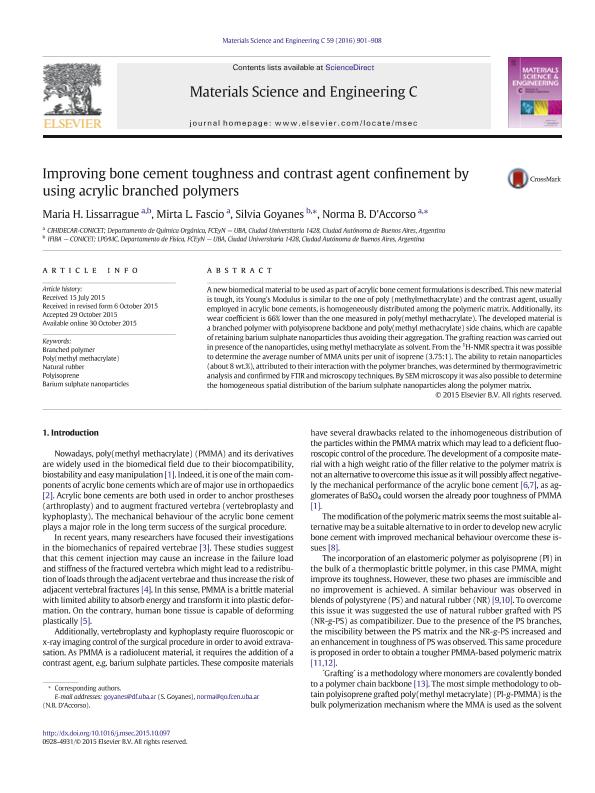Artículo
Improving bone cement toughness and contrast agent confinement by using acrylic branched polymers
Fecha de publicación:
02/2016
Editorial:
Elsevier Science
Revista:
Materials Science and Engineering: C
ISSN:
0928-4931
Idioma:
Inglés
Tipo de recurso:
Artículo publicado
Clasificación temática:
Resumen
A new biomedical material to be used as part of acrylic bone cement formulations is described. This new material is tough, its Young's Modulus is similar to the one of poly (methylmethacrylate) and the contrast agent, usually employed in acrylic bone cements, is homogeneously distributed among the polymeric matrix. Additionally, its wear coefficient is 66% lower than the one measured in poly(methyl methacrylate). The developed material is a branched polymer with polyisoprene backbone and poly(methyl methacrylate) side chains, which are capable of retaining barium sulphate nanoparticles thus avoiding their aggregation. The grafting reaction was carried out in presence of the nanoparticles, using methyl methacrylate as solvent. From the 1H-NMR spectra it was possible to determine the average number of MMA units per unit of isoprene (3.75:1). The ability to retain nanoparticles (about 8 wt.%), attributed to their interaction with the polymer branches, was determined by thermogravimetric analysis and confirmed by FTIR and microscopy techniques. By SEM microscopy it was also possible to determine the homogeneous spatial distribution of the barium sulphate nanoparticles along the polymer matrix.
Archivos asociados
Licencia
Identificadores
Colecciones
Articulos(CIHIDECAR)
Articulos de CENTRO DE INVESTIGACIONES EN HIDRATOS DE CARBONO
Articulos de CENTRO DE INVESTIGACIONES EN HIDRATOS DE CARBONO
Articulos(IFIBA)
Articulos de INST.DE FISICA DE BUENOS AIRES
Articulos de INST.DE FISICA DE BUENOS AIRES
Citación
Lissarrague, Maria Haydee; Fascio, Mirta Liliana; Goyanes, Silvia Nair; D'accorso, Norma Beatriz; Improving bone cement toughness and contrast agent confinement by using acrylic branched polymers; Elsevier Science; Materials Science and Engineering: C; 59; 2-2016; 901-908
Compartir
Altmétricas




